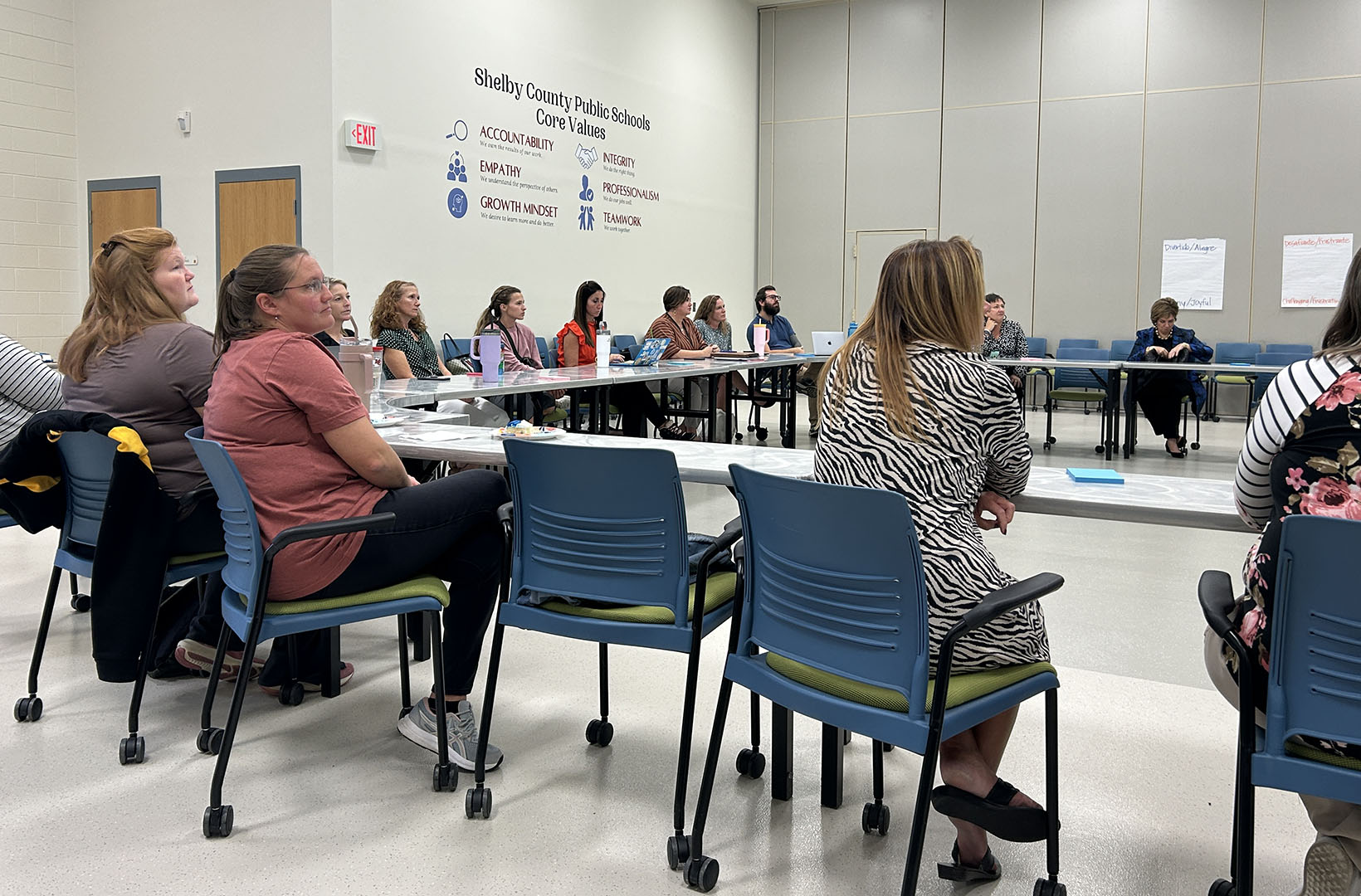
Photo submitted by the Kentucky Commission on the Deaf and Hard of Hearing
By Virginia L. Moore
kcdhh@kcdhh.ky.gov
When thinking of the most used languages in the country, American Sign Language seldom comes near the top of the list.
That’s a big mistake, said Virginia L. Moore, executive director for the Kentucky Commission on the Deaf and Hard of Hearing. In fact, ASL is the fourth most used language in the United States, according to the Gallaudet Research Institute.
According to a study in The Journal of the American Medical Association, 1 in 5 teenagers suffer from some type of hearing loss. And according to the U.S. Department of Health and Human Services, about three out of every 1,000 children in the United States are born with a detectable level of hearing loss in one or both ears. There are nearly 700,000 deaf and hard of hearing individuals in Kentucky, according to data extrapolated from the 2010 Census and from a 2005 survey by the National Institutes of Health.
“When we consider all of these facts,” Moore said, “it is imperative that we encourage more schools to teach ASL.”
The Kentucky Commission on the Deaf and Hard of Hearing (KCDHH) acts as an advocate for deaf and hard of hearing people on legislative issues, as well as a consultant to the governor, general assembly and various state and local governmental agencies concerning policies and programs that pertain to people with hearing loss. The commission also provides information, referral and advocacy services and an interpreter referral service for state agencies.
“The Kentucky Commission on the Deaf and Hard of Hearing has a rich history and track record of advocacy and providing information and services to the Commonwealth’s deaf and hard of hearing community and to anyone whose life is affected by hearing loss,” said Moore. “KCDHH also serves as a hub for school administrators, teachers and many other service providers to learn more about deaf culture, history of deafness, as well as provides a lending library of DVDs used by instructors, service providers, family members and a multitude of others whose lives have been affected, in some way, by hearing loss.”
Since its establishment more than 30 years ago, the commission has been instrumental in several efforts to level the playing field for the deaf and hard of hearing community. One such effort was a bill passed by the legislature in 1992 that required American Sign Language to be recognized and taught for foreign language credit in Kentucky’s colleges and universities. While ASL was recognized as a credited foreign language in a handful of colleges, universities and public schools, it was never widespread.
American Sign Language, accepted as a true language by the U.S. Supreme Court in 1989, has its own system of grammar and syntax and is constantly changing as it grows within its culture. As a result, the Kentucky Department of Education’s Foreign Language Department is partnering with the commission to expand the process of getting ASL accepted as a foreign language in Kentucky’s K-12 classrooms.
“Working with the Kentucky Department of Education to achieve this partnership is just one aspect of what we need to do to get ASL into K-12 classes,” explained Moore. “We also have to make sure we have plenty of deaf teachers and let everyone know that KCDHH, Eastern Kentucky University, Kentucky School for the Deaf and the Statewide Educational Resource Center on Deafness are resources for teachers and administrators who want to learn more about ASL and what it takes to get it in their schools.”
For teachers, having deaf or hard-of-hearing students in a classroom can be a challenge to keeping the class accessible. On the other hand, it also can serve as a catalyst for making effective, focused changes that improve the classroom experience for all students. The Kentucky Commission on the Deaf and Hard of Hearing can serve as a vital resource to reinforce those teacher’s efforts.
“We (at the commission) want schools to know that there is another choice when it comes to foreign language,” said Moore, “and it’s a choice that has great potential to do wonderful things in the community as a whole. If children learn ASL at a younger age, then the possibility of becoming interested in the culture and language may lead to studying it in college and becoming interpreters or teachers of ASL, deaf studies, etc., while also allowing deaf and hard-of-hearing students to have more effective communication with their peers. It’s a win-win for everyone.”
For more information on ASL resources, contact Virginia L. Moore at the Kentucky Commission on the Deaf and Hard of Hearing, (502) 573-2604, or by email kcdhh@kcdhh.ky.gov.
Virginia L. Moore is the executive director of the Kentucky Commission on the Deaf and Hard of Hearing and the child of deaf parents. Because Moore’s first language is ASL, she is also an advocate for cultural understanding and the promotion of languages.




Leave A Comment